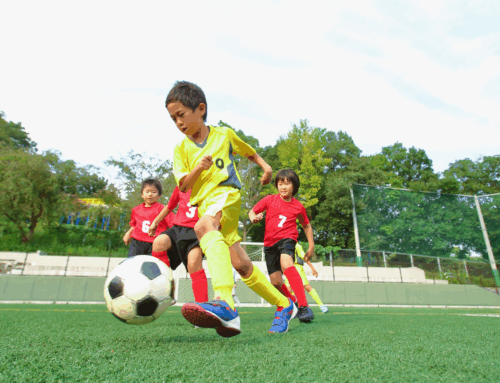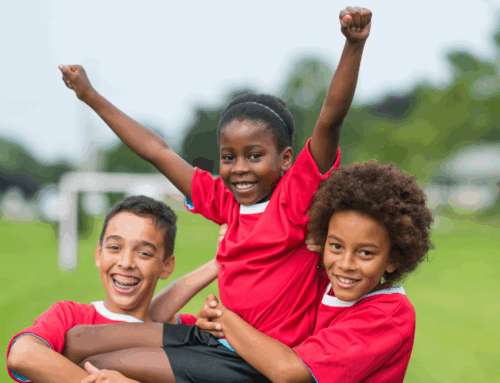Get our exclusive report. Download the iSport360 Club Switching Report Here – For Club Admins, Rec Leaders and Coaches.
The Joy Movement: Bringing Fun Back to Youth Sports
Remember when sports were just… fun? When the biggest worry was whether you’d get orange slices at halftime, not whether your batting average would impress college scouts? There’s a quiet revolution happening on playing fields across the country, and it’s all about rediscovering what made us fall in love with sports in the first place: pure, unadulterated joy.
The Score That Really Matters
Picture this: It’s Saturday morning, and instead of hearing coaches barking instructions about “playing to win,” you hear laughter echoing across the field. Kids are high-fiving opponents after great plays, celebrating teammates’ improvements, and yes, still keeping score – but not in the way you might think. They’re counting moments of joy, acts of sportsmanship, and personal breakthroughs.
This isn’t some participation-trophy fantasy. It’s a growing movement that recognizes a fundamental truth: when kids have fun, they play better, stick with sports longer, and develop into well-rounded athletes and human beings.
Beyond the Scoreboard: What Success Really Looks Like
The fun-first approach doesn’t mean lowering standards or avoiding competition. Instead, it expands our definition of winning. Sure, there’s still strategy, skill-building, and yes, actual games with actual winners and losers. But success is measured in multiple ways:
- The shy kid who finally calls for the ball
- The team that celebrates their goalie’s first successful save
- Players who help an opponent up after a collision
- The moment when a child masters a skill they’ve been working on for weeks
These victories might not make the local sports page, but they create the foundation for lifelong athletic engagement and character development.
The Magic of Modified Games
One of the most exciting aspects of this movement is the creative reimagining of traditional sports. Coaches are discovering that small modifications can dramatically increase participation and enjoyment:
Basketball becomes “Everyone Scores” where the game doesn’t end until every player has made at least one basket. Suddenly, the less skilled players aren’t just running up and down the court – they’re integral to the outcome.
Soccer fields get smaller and teams get bigger with constant substitutions, ensuring everyone gets meaningful playing time. No more bench-warmers wondering why they signed up.
Baseball introduces “tee ball for everyone” on certain days, giving developing players the confidence to make contact and experience the thrill of running the bases.
These aren’t dumbed-down versions of “real” sports – they’re thoughtfully designed experiences that prioritize engagement and skill development over pure competition.
The Parent Trap (And How to Avoid It)
Let’s address the elephant on the sideline: well-meaning parents whose competitive spirits sometimes overshadow their children’s enjoyment. The fun-first movement is gently redirecting this energy in powerful ways.
Instead of shouting “Run faster!” parents are learning to celebrate effort with “Great hustle!” Rather than critiquing technique from the stands, they’re focusing on encouragement: “You’re getting better every game!” The post-game car ride transforms from a play-by-play analysis session into a celebration of the experience: “What was your favorite moment today?”
This shift isn’t just better for kids – it’s liberating for parents too. When you’re not constantly worried about your child’s performance, you can actually enjoy watching them play.
Building Tomorrow’s Athletes (And Citizens)
The beautiful irony of prioritizing fun is that it often leads to better athletic development. When kids aren’t paralyzed by fear of making mistakes, they take creative risks. When they’re not burned out from pressure, they practice longer. When they’re having fun with teammates, they develop better communication and cooperation skills.
These young athletes are learning that excellence and enjoyment aren’t mutually exclusive. They’re discovering that the best competitors are often those who can maintain perspective and joy even under pressure. These are lessons that extend far beyond sports into academics, careers, and relationships.
The Ripple Effect
This movement is creating unexpected benefits throughout youth sports communities. Volunteer coaches are staying involved longer when their focus shifts from wins and losses to player development and enjoyment. Families are building deeper connections with other families when the emphasis is on community rather than competition. Local businesses are more eager to sponsor teams that represent positive values in their communities.
Even officials and league administrators are getting on board, implementing rule modifications that prioritize participation and skill development over pure competition in younger age groups.
The Path Forward
The fun-first movement doesn’t require overhauling entire sports programs overnight. It starts with small shifts in perspective and practice:
- Coaches spending equal practice time on fundamental skills and games that make everyone laugh
- Teams creating traditions that celebrate individual growth alongside team achievements
- Parents modeling good sportsmanship and positive communication
- Organizations tracking metrics like player retention and enjoyment alongside traditional performance indicators
The Ultimate Victory
At the end of the day, the goal isn’t to eliminate competition or lower standards. It’s to remember why we put kids in sports in the first place: to help them grow, learn, and discover the joy of physical activity and teamwork.
When we succeed in making sports fun, we create young people who will stay active throughout their lives, who understand the value of teamwork and perseverance, and who know that the best competition happens when everyone is having a great time.
That’s a win that goes far beyond any scoreboard – and it’s a victory we can all celebrate together.
What are your thoughts on bringing more fun back to youth sports? Share your favorite memories of sports being purely joyful, or tell us about positive changes you’ve witnessed in your local sports community. The revolution starts with each of us choosing joy over pressure, growth over perfection, and fun over fear.
About the author:
Amy Masters is a sports mom, coach, and club administrator. She has been coaching youth sports for more than 10 years. She started Jr Lions Field Hockey, the youth recreation program for the Hunterdon County community growing it from 40 players in year 1 to 150 players by year 3. A few years later, she saw the love and competitiveness grow then started Omega Field Hockey Club serving NJ and PA players. Before coaching, she was a collegiate field hockey player for Lock Haven University. In her spare time (lol), she is head of marketing for iSport360 and the co-editor of the Youth Sports Survival Guide. The Youth Sports Survival Guide is the largest youth sports newsletter in the world.
Learn more or request a demo of our youth sports software that is helping teams improve communication, organization and player development.
August 21, 2025





